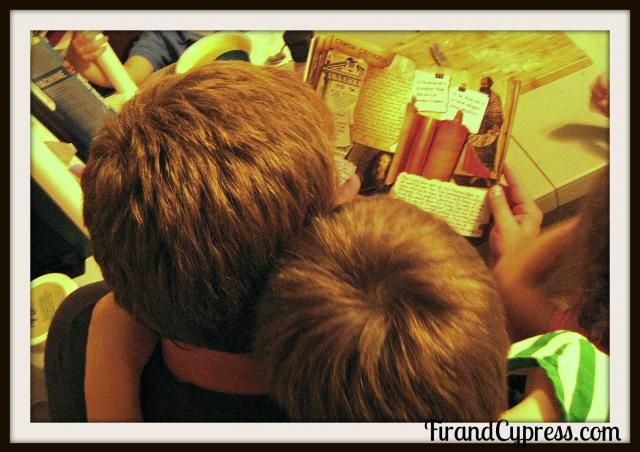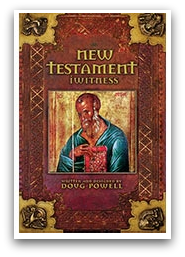These iWitness books are written in a quick-read or "coffee table" book format that gives you the option to read a long section, or just a short one, and still learn something new. The pages are filled with colorful and interesting pictures that relate to the text, such as pictures of the caves in Qumran near the discussion about the Dead Sea Scrolls. These books are intended to be read by ages 11 and up, however our oldest son is not quite 9 and we enjoyed reading them allowed together during our evening devotions as a family.
In the first book, Biblical Archaeology, Doug Powell talks about the stories of the Bible, such as the Flood and the Exodus and gives several historical finds that coincide with each story. We learned many interesting stories that I hadn't known before. I've always enjoyed ancient Egyptian History and so the part of the book which discussed which Pharaoh could have been in power during the time of Moses was fascinating to me. My spine tingled as I read of excavations at Jericho that showed that the outer city wall had fallen against an inner retaining wall (was that the distant sounds of trumpets I heard?)
In Old Testament iWitness, Powell discusses the books of the Old Testament, how were they chosen, how long have they been considered together to form a book, and is there evidence outside of the Bible for the historical events they describe. We found it interesting to learn some of the many ways that the scribes used to make sure they copied the text accurately such as making a grid, counting the words, and throwing out the copy if one inaccuracy was found. Again there are many fascinating pictures on each page that go along with the writing, and give you a little insight as to where or who they are talking about.
In New Testament iWitness, Powell discusses how the books of the New Testament were chosen, why others were rejected and what evidence we have of these books being the ones used by the early church. He also gives a brief history of the early church fathers, what books they specifically mention as being inspired by God. There is a section discussing some of the books that were not chosen to be included and why, some being outright heretical and others merely acceptable for worship, but not considered meant for the universal church.
We found these books to be extremely interesting. All of the children (other than the baby) wanted to be standing next to the reader to see the pictures. The pictures inspired great discussion about the subjects. Our children were technically "too young" for these books, however we found the writing to be understandable by at least our older two boys (ages 6 and 8) with just the occasional word that needed further explanation. In my opinion, these books are great for children and adults alike, even if you had no children in your home but were interested in Biblical History from a Christian worldview, you would enjoy these books. If you, or your child, have a difficult time with books with lots pictures (think "scrapbook" feel) or varying text fonts, including many with a "handwritten" fonts, then this book may not be for you. We were pleased with the engaging fonts and scrapbook-like picture/text format. We found a lot of information that we didn't know and certainly these books would be a great starter to inspired further study into the subject of Christian Apologetics.
Follow Apologia on Social Media











No comments:
Post a Comment
I love to hear your thoughts and get to know you better! "He who restrains his words has knowledge,
And he who has a cool spirit is a man of understanding." Prov 17:27
If your comments are insulting, rude or inflammatory, they will be deleted.